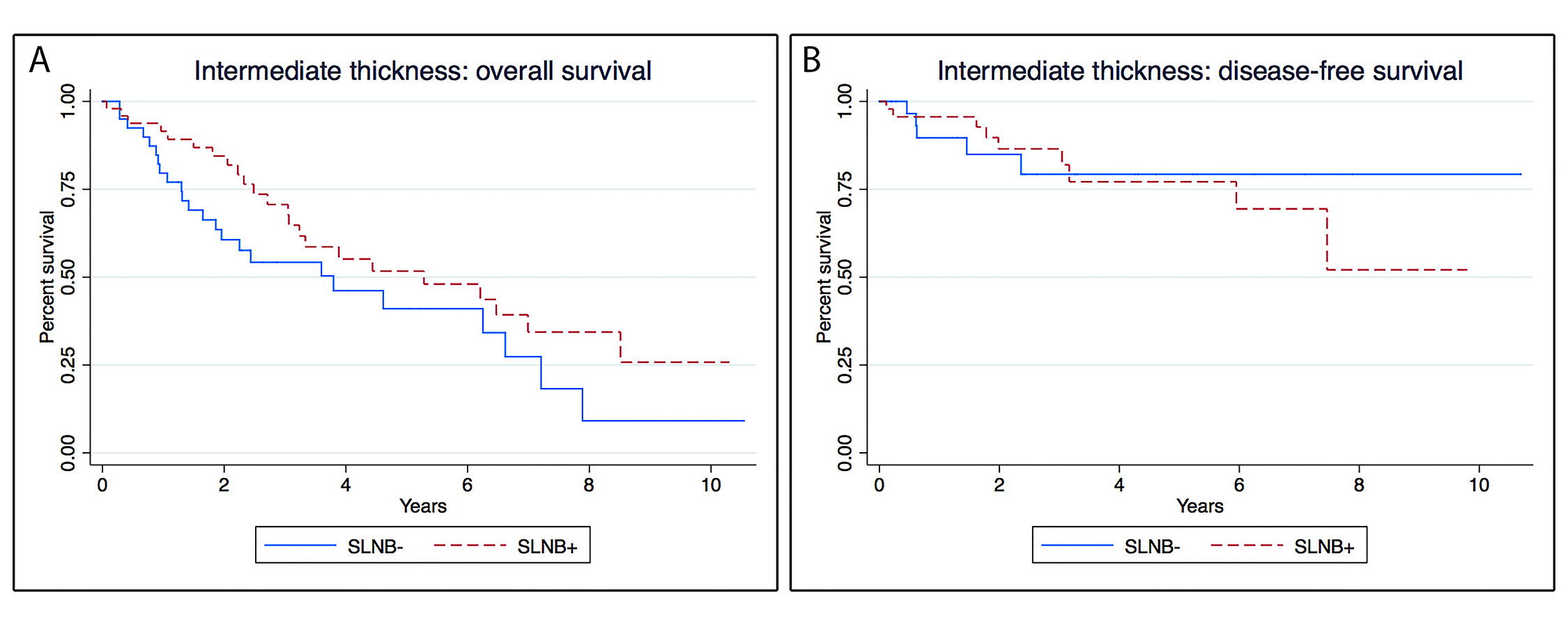Back to 2014 Annual Meeting Posters
Sentinel Lymph Node Biopsy Does Not Improve Disease-Specific Survival in Elderly Patients With Intermediate Thickness Melanoma
*Kate H Dinh, *Mary Maloney, *Dori Goldberg, *April Deng, *Mary Sullivan, Laura Lambert, Giles Whalen, *Jennifer LaFemina
University of Massachusetts Medical School, Worcester, MA
Objective: To determine whether sentinel lymph node biopsy (SLNB) is associated with improved disease-specific survival among elderly patients with intermediate-thickness melanoma
Design: Retrospective cohort study of prospectively-maintained tumor registry
Setting: Single institution tertiary care center
Patients: Adults > 70 years of age, who underwent surgical intervention for melanoma from 2000-2013
Main Outcome Measures: The primary outcomes were overall survival (OS) and disease-free survival (DFS). Other clinicopathologic variables measured included age, gender, anatomic site, histologic type, tumor thickness, presence of adverse features, receipt and result of SLNB, and receipt of completion lymph node dissection (CLND).
Results: Ninety-one patients (mean age 80 years, 54% male) underwent wide excision of an intermediate-thickness melanoma. Forty-nine patients (54%) received a SLNB. Seven of these biopsies (14%) were positive, and five patients (71%) went on to receive CLND. Five-year OS was 41% in patients who did not receive SLNB and 52% in patients who did receive SLNB (Fig. 1A). However, 5-year DFS was 79% in patients who did not receive SLNB and 77% in patients who did receive SLNB (Fig. 1B).
Conclusions: Among elderly patients with intermediate-thickness melanoma, patients who received SLNB had higher 5-year OS than those who did not receive SLNB. However, the 5-year DFS is similar between the two groups, which suggests that the OS differences are related to non-melanoma factors. Routine SLNB for intermediate-thickness melanoma patients may not significantly change the outcome for this age group, and clinical decision-making should consider individual patient comorbidities and goals of care.

Back to 2014 Annual Meeting Posters
|
|

